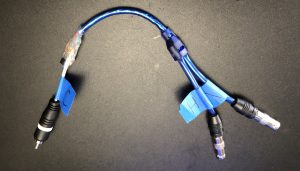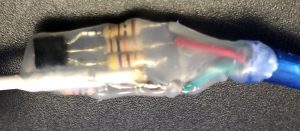There are many scenarios in the retro gaming world that you might need to use “VGA”, or RGBHV on a device that only accepts RGBs. I think the most common scenario might be people connecting 640×480 VGA to a 480p compatible RGB monitor, but there’s quite a few others, depending on your setup.
Sadly, it’s common to see people use passthrough Y cables to combine the Horizontal and Vertical sync and connect directly to a csync input. Unfortunately, unlike combining audio channels, simply wiring the syncs directly together could damage your source device, and always results in a mangled signal…while it may “work”, you shouldn’t do it.
As a result, it’s always recommended to use some kind of circuit to combine sync. There’s devices like the Extron RGB interfaces that work great and can be found fairly cheap on eBay. While they’re great solutions, they’re another box, another set of cables and another PSU to worry about.
Ste from HD Retrovision has provided a circuit for a passive sync combiner that will work in many setups. This circuit effectively implements AND logic for sync combining, so all side-effects and shortcomings of using this method apply; Some monitors like the Sony BVM D and A series will still have their typical sync issues requiring XNOR sync combining (or a full sync regeneration), but in many scenarios this can work just fine. Also, this circuit can be built into existing projects, made into a standalone board, or just hacked into a Y cable like shown below.
Some things to note about this circuit:
- It’s NOT bidrectional; This will only combine sync, not split it.
- Vertical and Horizontal sync’s need to be connected to their specific inputs, not just blindly connected.
- This circuit only operates when the sources feeding V and H are low impedance.
- R4 is technically optional, but allows the C output to drive into both HIGH-Z (TTL) and 75Ω terminated inputs. If it’s removed, you can simplify the construction by not having to tap into the ground node, but then only driving into 75Ω terminated inputs will work.
See this blog post on the HD Retrovision website for more information: https://www.hdretrovision.com/blog/2019/10/10/engineering-csync-part-2-falling-short



